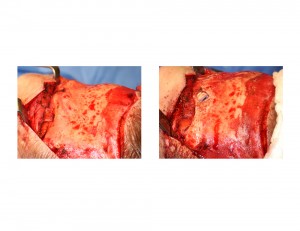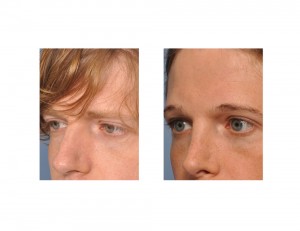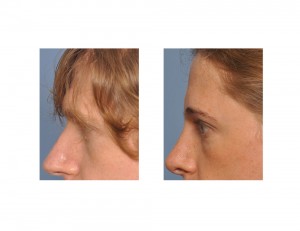Background: The shape of the forehead is very gender specific and these differences are well known. The male forehead has prominent brow ridges, a brow bone break and a forehead that has a slight backward slope. The female forehead has no visible brow ridging or break and a more convex shape as it extends upward into the frontal hairline. These forehead shape differences are driven largely by the influence of testosterone on the development of the frontal sinuses and the frontal bone.

But the brow bone reduction is often not enough to get a definitive gender change in the FFS patient. As part of the brow recontouring, the lateral or tail of the brow bone must be reduced to allow a more upward sweep to the tail of the eyebrow. In some cases, the orbital rim reduction may need to be carried around to the side to help with greater orbital exposure. (opening of the eye) Also, the frontal hairline may benefit from being advanced or lowered. If access to the brow bone reduction is done through a hairline or pretrichial approach, then vertical forehead reduction/hairline repositioning can be done at the same time as the brow bone reduction.
Case Study: This 35 year-old patient was undergoing a variety of facial feminization surgeries from the forehead down to the adam’s apple. The concerns on the forehead was that the brow bones were too strong but the upper forehead was adequately shaped/projected. The hairline was also in good place (not too high) with reasonable hair density.


Case Highlights:
1) Brow reduction is an important part of many facial feminization surgeries.
2) Brow reduction can be done by burring but usually needs a more aggressive approach with an osteoplastic bone flap to create a more feminine brow shape.
3) Many FFS brow bone reductions can be done through a hairline or pretrichial incision which allows for a simultaneous hairline advancement if desired.
Dr. Barry Eppley
Indianapolis, Indiana




